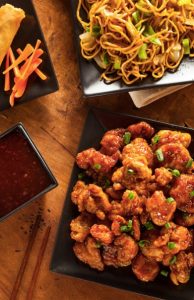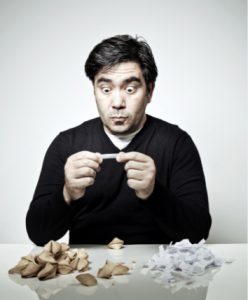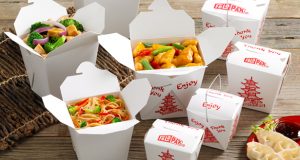Duck head, lotus root, pig intestine soup… Sound like familiar X-Factor fare? In actual China, you’re more likely to find boiled chicken feet than deep fried chicken balls, and most Chinese people will look at you like you shot their grandmother if you presented them with a plate of Chop Suey.
In fact, as the wonderfully named former New York Times reporter Jennifer 8. Lee pointed out in her 2008 TED Talk, most Chinese people are totally oblivious to our most ubiquitous Chinese dishes. Chinese food in the West has diverted drastically in the last 200 years since it washed up on American shores, and has changed and adapted to Western tastes to the point that it is barely recognizable in China as Chinese food.
Chinese-American Cuisine

Given that most Chinese would faster use prawn toast as a door wedge than an appetizer, it may seem a jump in logic to start an American-Chinese restaurant in the gastronomical utopia that is Shanghai. However, in December 2013 two brave souls, Fung Lam and Dave Rossi, opened Fortune Cookie – an American-Chinese restaurant complete with Big Bang Theory-esque takeaway boxes, General Tso’s chicken and, of course, the iconic fortune cookie. While the reception was generally positive amongst young and/or foreign diners (Lam and Rossi both claim that older Chinese customers would complain that the food was too sweet and the potions too large), the restaurant, unfortunately, served its last lemon chicken in January of this year.
Chinese-American Cuisine in China
Lam and Rossi are not alone; attempts to introduce American Chinese food to China can be traced to at least 1990, when Peng Chang-kuei, the likely inventor of the Chinese-American staple, General Tso’s chicken, opened a restaurant serving the dish first in Taipei, and then in his native Hunan province. The recipe was modified from the “original” sweet and sour chicken dish to include more meat from other parts of the chicken, and subtler flavours. While the restaurant has had success in Taiwan, Unfortunately, the Chinese didn’t bite, and like many other American-Chinese restaurants, it shut soon after.

Similarly, China’s largest fortune cookie manufacturer has not been so, well, fortunate. Beijing Fortune Cookies, which has been ticking along for over six years now, still sells fewer fortune cookies in a year than America’s largest fortune cookie manufacturer makes in a single day. The Chinese “just have no idea what this is,” says founder Shi Nana, a former marketing executive. “It’s been a very long process. We tried to sell them to hotels and restaurants in China, but that didn’t go over well; they prefer fruit plates.”
The jury is out as to why these ventures haven’t had much success in getting the Chinese to chow (mein) on their grub. Many of the older generation of Chinese diners may agree that, as I’ve said before, over the years Chinese food in America changed to suit American tastes. Applesauce goes in the duck sauce as well as dipping sauce for spring rolls; peanut butter is used in fried noodles and fried rice and even dumplings are stuffed with cream cheese. Similarly, when ordering a Chinese in Germany or the Netherlands you’ll probably be presented with Indonesian or Thai dishes such as Babi Pangang or Satay Chicken.
Chinese food can be disappointing

Many visitors to China are shocked when their favourite sweet and sour chicken balls are omitted from the menu card in favour of foreign ingredients such as taro, offal and fermented stuff. No doubt many stomachs have been churned by the very thought of eating “100-year egg” (which is surprisingly delicious). On the flip side, Chinese diners have seemingly failed to get on board with fanta-flavoured duck and the likes, which perhaps lacks the nuance that traditional Chinese dishes have. In any case, Western expats in China might have to wait for their next trip back home to enjoy their favourite sofa fodder before long!
To read about Panda Express in China click here.
We may not run tours that sample Chinese-American Cuisine, but how about North Korean – Chinese cuisine? Check out our North Korean tour program.





